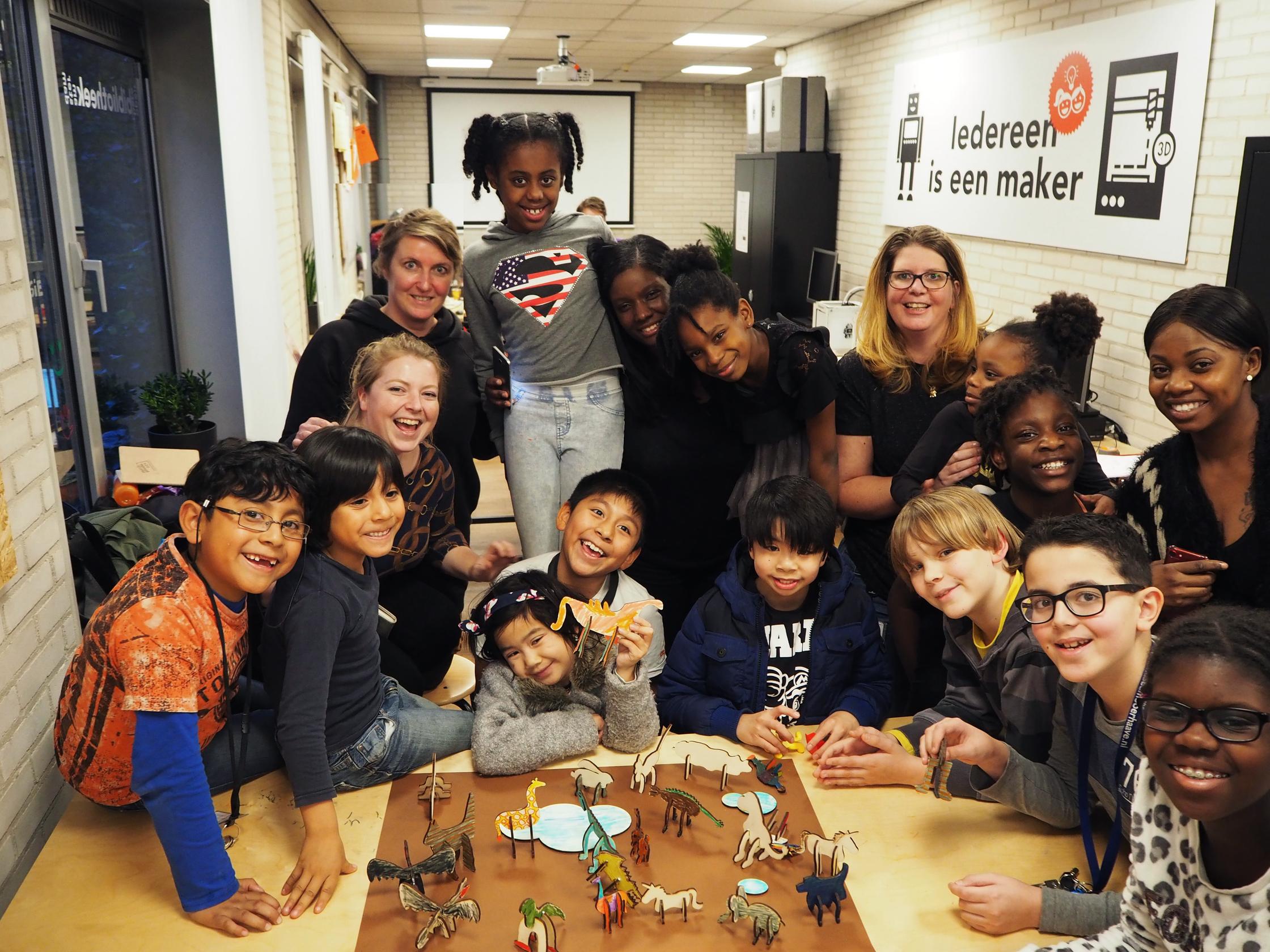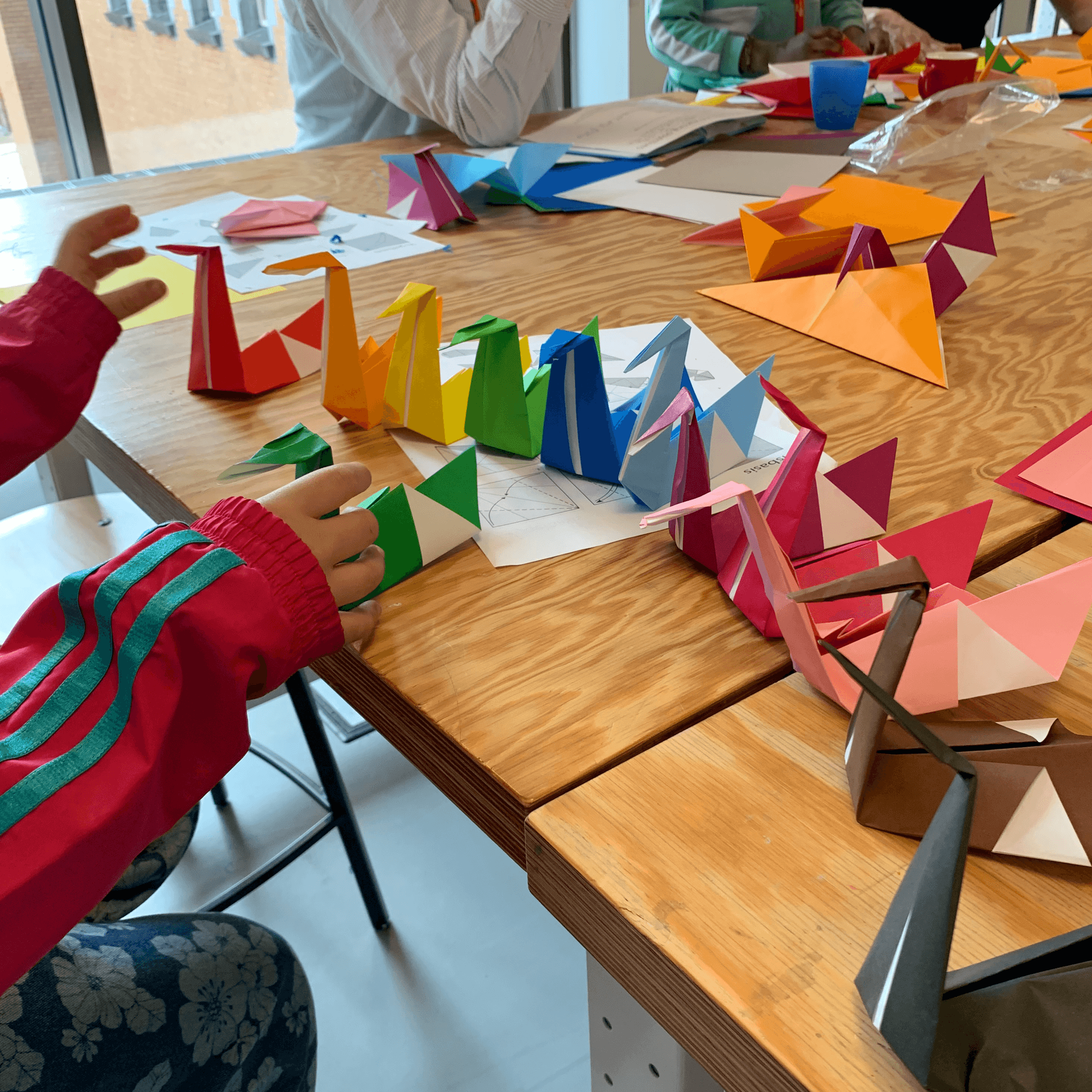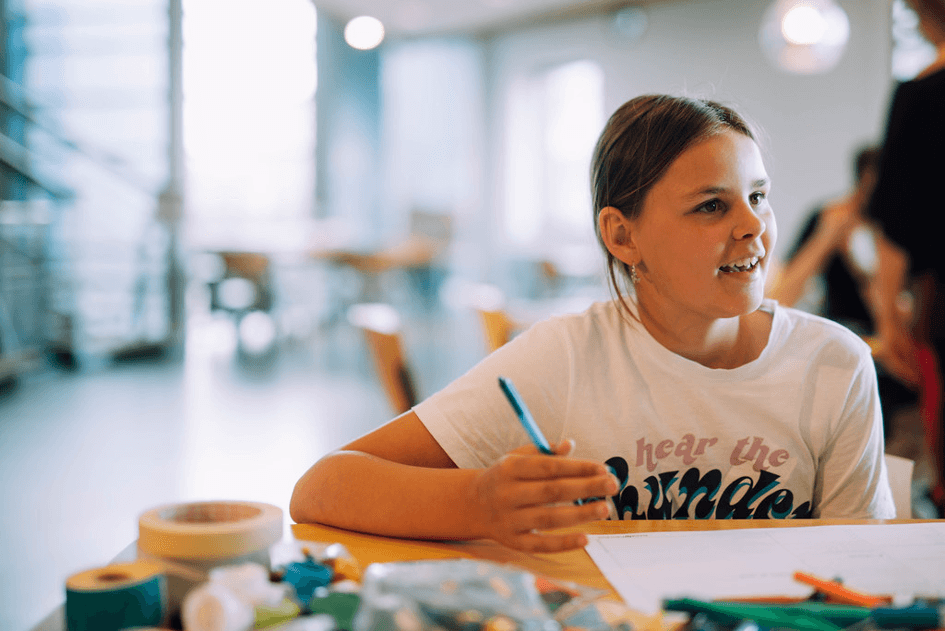“Look, this is how they fit together”, says Oshaïra (11 years old) as she points to the drawing of the unicorn she has just made. The drawing consists of three separate parts, a side view and two shapes of connected paws seen from the front. The drawing will be retraced in the open source sketch software Inkscape and later cut out from a panel of wood by a lasercutter. After that, the shapes will fit nicely together into a threedimensional object. When finalised, the object will be decorated. With rainbow colours ofcourse.
Next to a lasercutter, there are a number of other machines and new techniques that have been used by children in this makerspace in the past couple of months. 021 Maakplaats (Makerspace) was initiated by the city of Amsterdam, the OBA (public library of Amsterdam) and Waag, among others. There are multiple makerspaces like this spread out over the city. Waag has developed the educational program of Fabschool and joins hand with the local makerspace coaches to bring the program to children. Its a big hit, because the classes fill up quicker with each following edition. Mariëlle, who is a maker educator at Waag, explains: “We get children in from every age. It is accessible, they get excited about the classes and they learn so-called 21st century skills.”
Toon, (8 years old) is keeping himself busy with the design program Tinkerpad. With seeming ease he substantiates 3D objects out of thin air with just a few clicks of the cursor and use of his keyboards arrows. He started out by designing a few simple triangular objects and has quickly progressed to building complex shapes, such as a pyramid and even an entire city. Designing and building has enthused him so much he even decided to get an account to tinker with the software at home. “I needed to get the hang of the program first, because you have to work very precisely. But I really enjoy using this because it lets you build pretty much anything.” His vast and elaborate city is now the proud owner of a hotel with transparent windows, a half pipe for skateboarders and a park with a fountain at the center, surrounded by benches. Soon his very own city may come to life through the art of 3D printing.
Cisca knows the ropes of being a makerspace coach. She followed a course at Waag and was an intern at Fabschool. When the annoucement came in that in Reigersbos a new makerspace would be opened, she immediately offered up her help to join the core team as a makerspace coach.
“The happy faces of the kids and the creativity that keeps flowing makes this the best job. Everytime we master a new technique using these new machines feels like a victory, both for us as well as the children. But to have an interest in technology and to love working with children seems necesarry, because this work can be quite intensive.” Luckily, makerspace coaches are a force of nature in Amsterdam, their skills can be utilised everywhere in the city.
Stoika, a temp who previously worked at a carpentry workshop that unfortunately went bankrupt, adds tot he story “grownups have almost forgotten how to use their imagination. It is astounding what children can come up with.”
A child next to her is giving her cues on how to transfer his drawing onto a digital version on screen to make it suitable for a lasercutter. “A waterdragon” proclaims the same kind with a proud smile. The dragon has an impressive jawline and has spikes on its back. Behind the pair there’s a couple of children playing “Makey Makey”, a digital tool turning household objects into a keyboard, via a closed loop and by sending commands to a computer.
As the merry buzz of children playing with the machines and computers is humming along, there’s a student quietly observing them in the background. Mireille from HvA is studying a minor Diversity in the City and is analysing how children are playing and learning new skills at the same time. She demonstrates what the kids have made so far: “It usually starts out with a simple assignment with pre-made shapes they need to fill in. It gets more complex as the lessons go, and children are learning at the same time whilst improvising and using their imagination. They progress with the technology.”
It’s time to showcase the childrens work. They gather round and place their selfmade wooden animals on a large paper sheet, decorated with a water pond and some trees, to make it look like a true animal kingdom. Not only do children learn how to proudfully present their new skills, they also learn to contribute to a bigger picture and collaborate in the process. A father who has just dropped by to pick up his kids, comments: “my children absolutely love this. They develop new technical and social skills and they get to know other kids their age.”
The children pose and flash their biggest smile for the camera in front of their finished work. They each get to take home their own masterpiece, since there will surely be more editions of Fabschool to come with new technology and new projects to teach children about technology of the future.
You can find the photoalbum van Fabschool Reigersbos here.


